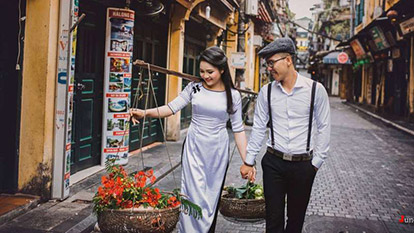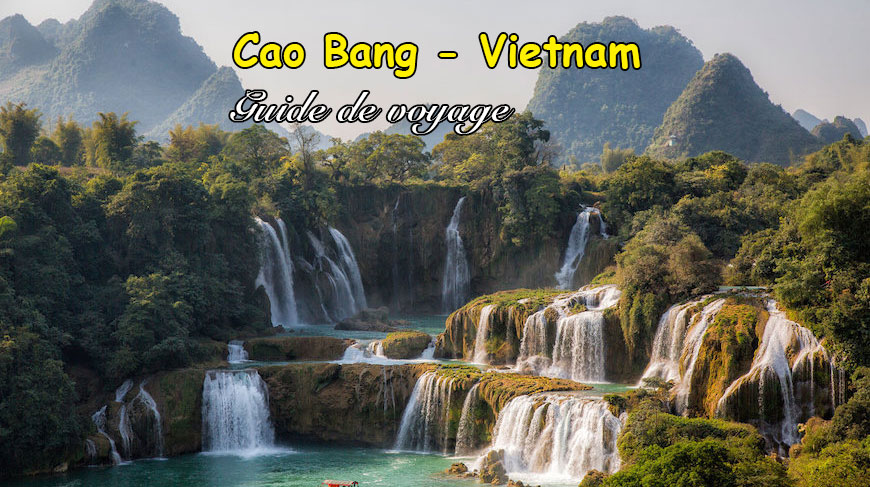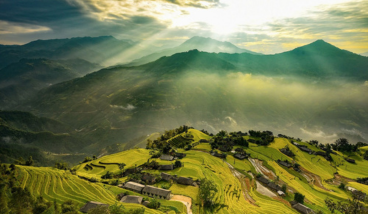Exploration of Saigon - Ho Chi Minh City
10/04/2019 3.344 Views
Like many cities in Vietnam, Saigon did not escape the wrath of war. Since the beginning, Saigon has had quite a traumatic history. There are many citations to the birth of Saigon and the origin of its name. In the 15th century, this area were swamps, marshes and thick forests. By the early 17th century, a small township was formed. According to one theory, Saigon or Sai Con has its root in a Khmer word Prei Kor (Kapok Tree Forest)....
Like many cities in Vietnam, Saigon did not escape the wrath of war. Since the beginning, Saigon has had quite a traumatic history. There are many citations to the birth of Saigon and the origin of its name. In the 15th century, this area were swamps, marshes and thick forests. By the early 17th century, a small township was formed. According to one theory, Saigon or Sai Con has its root in a Khmer word Prei Kor (Kapok Tree Forest).
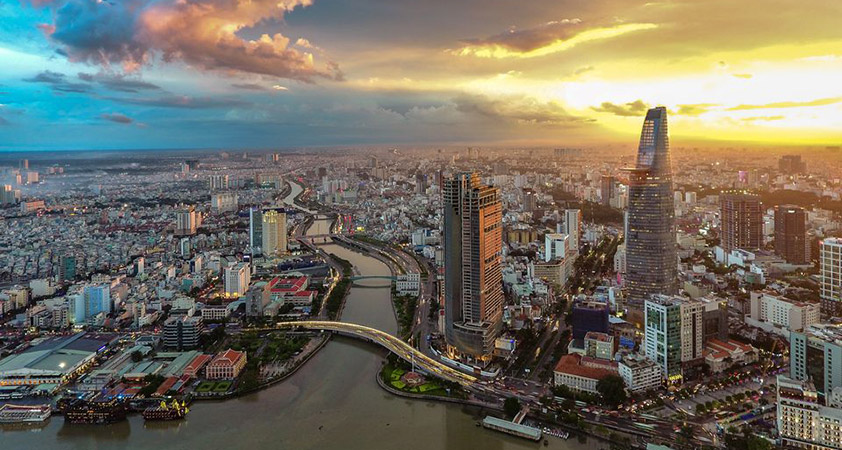
The name Saigon was used officially in 1698, when Lord Nguyen Phuc Chu sent Mr. Nguyen Huu Canh to this region to create various districts and to form a government for this southern outpost. Because of its strategic location for trade and commerce as well as military importance, Saigon continued to grow and became a bonafide city. By 1772, Mr. Nguyen Cuu Dam began to fill many of the canals to form streets. In the mid 19th century, the French with the aid of the Spanish invaded this port city and destroyed the fort. This event was the precursor to the long struggle between the people of Vietnam and France leading to the historical defeat of the French in 1954. In the years after the defeat of the French, Vietnam was divided into two separate countries and Saigon became the hub of resettlement for many as people from north and central Vietnam immigrated south.\
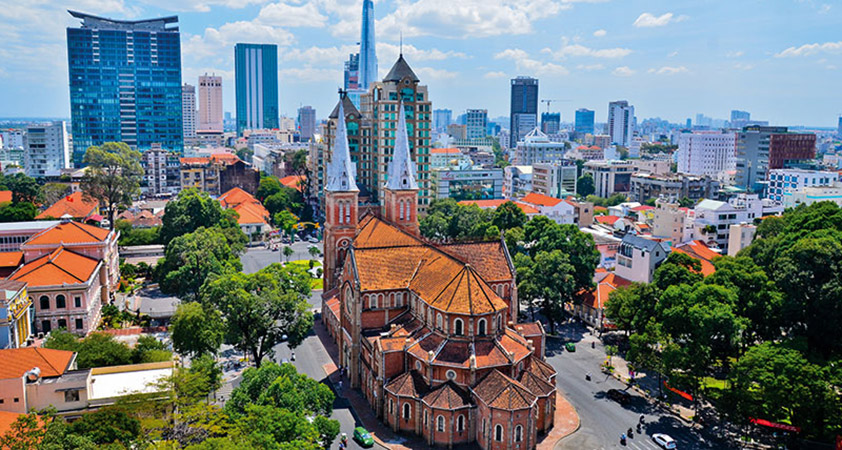
In the 60's and 70's, Saigon was bustling with commerce and business. It was the cultural center and the capital city of South Vietnam. Already heavily influenced by the French in terms of culture and style, the city had an air of a French provincial town with a Vietnamese twist. Saigon was dubbed the "Pearl of the Orient" by the foreign press. The city was alive with activities and cultural diversity that rivaled any Asian city at the time. After the fall of South Vietnam to communism in 1975, the city and many of its inhabitants were in a state of chaos and turmoil. In 1976, the new government renamed the city Ho Chi Minh City and shut its door to the rest of the world. Although recognized world wide as Ho Chi Minh City, to the people of Vietnam, the city is still lovingly referred to as Saigon.
Attractions
Reunification Palace
The Reunification Palace is beautiful in its ugliness, a 1960s monstrosity designed with the help of Soviet architects. Most people will remember the image of a North Vietnamese tank crashing through the gates on 30 April 1975 signifying the fall of Saigon. The tank still graces the front lawn. Rooms open to the public remain exactly as they were in 1975, showing where important meetings were held during the war, as well as some of the private quarters of the president and his family. Most fascinating are a series of underground tunnels housing a telecommunications centre.
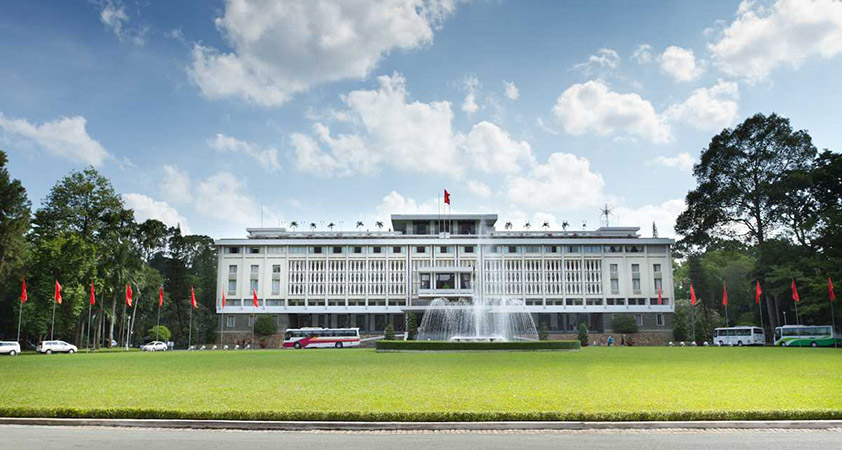
Nam Ky Khoi Ngia, District 1
Tel: (08) 822 3652.
Opening hours: Daily 0730-1100 and 1300-1600.
War Remnants Museum
Formerly known as the Museum of American War Crimes, the name has been toned down so as not to offend its US visitors and is now the War Remnants Museum. This is not a museum for the sensitive as it houses instruments of torture and hundreds of photographs of atrocities committed during the 20th century and, in particular, the Vietnam War. Visitors cannot fail to be moved as the exhibits provide a context for a period of history many only know from old newsreels and Hollywood movies. At the front of the museum is a small collection of military hardware and, most interestingly, the mobile guillotine used by the French colonists to dispense justice throughout the country before World War II.
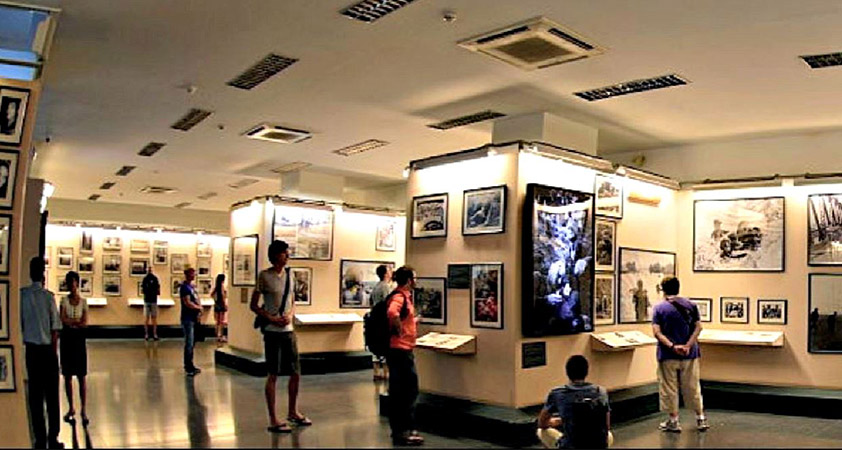
28 Vo Van Tan, District 3
Tel: (08) 930 5587.
Opening hours: Daily 0730-1145 and 1330-1715.
.
Notre Dame Cathedral
The twin towers of Notre Dame Cathedral have been a familiar landmark in Ho Chi Minh City since the 1880s. In front of the cathedral in a small garden is a delicate statue of the Virgin Mary. The interior of the cathedral is rather plain, unlike most French cathedrals, with no stained glass but it is a cool escape from the heat outside.
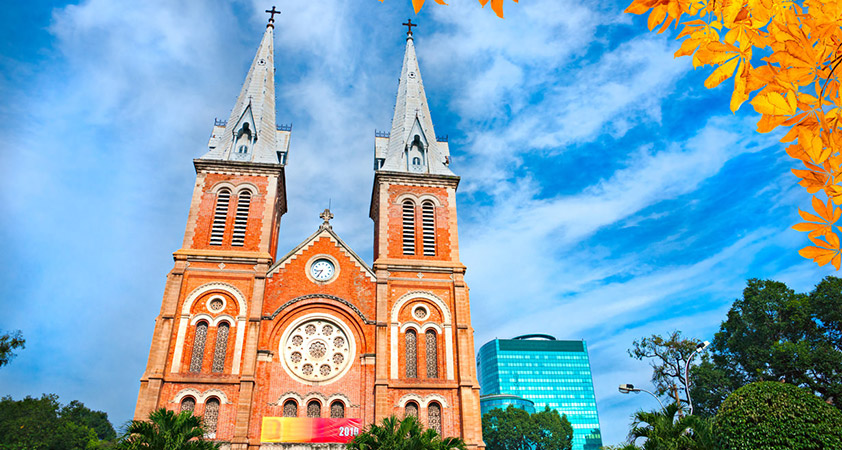
Dong Khoi, District 1
Opening hours: No formal times.
Post Office
Across from the Notre Dame Cathedral, the vast Post Office was also built in the late 19th century in European style. The interior has hardly been touched since it was built and is dominated by a huge portrait of Ho Chi Minh. The building always seems busy but most people are just visitors rather than customers.
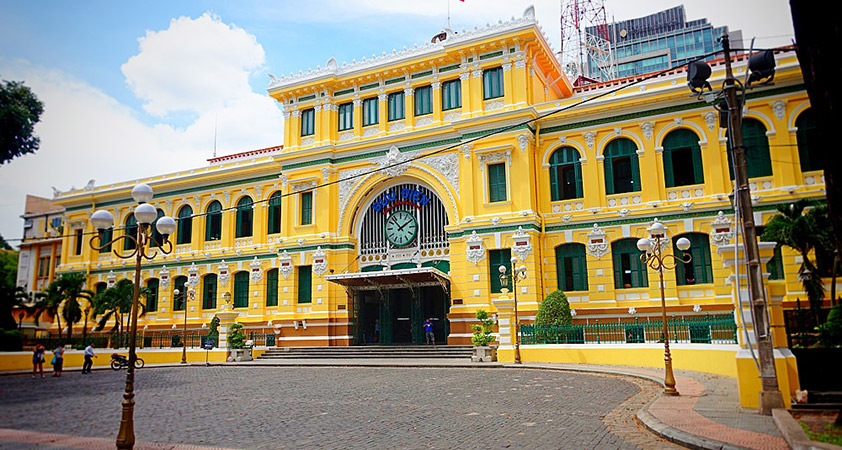
2 Cong Xa Paris, District 1
Tel: (08) 829 9615.
Opening hours: Daily 0630-2130.
Ho Chi Minh City Museum
Housed in the former building of the Government of Cochinchina, the Ho Chi Minh City Museum (formerly the Revolutionary Museum) contains artefacts, such as weapons, uniforms, medals and old photos, from the period of Communist struggle against the French and the Americans. Unfortunately, the exhibits are only labelled in Vietnamese but some are self-explanatory. Outside the museum is a collection of military hardware including a tank and a helicopter.
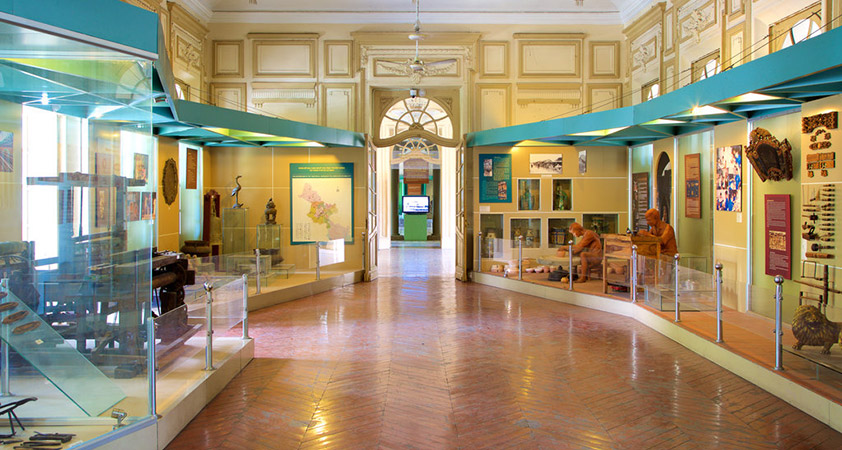
65 Ly Tu Trong, District 1
Tel: (08) 829 9743 or 829 9741.
Opening hours: Daily 0800-1600.
Historical Museum
Located just inside the entrance to the Botanical Gardens and Zoo, the Historical Museum houses a collection of artefacts covering the last 2000 years of Vietnamese history including items belonging to ancient cultures such as Dong Son, Oc Eo and Cham. The museum was built in 1929 and the collection assembled by the Ecole Francaise d’Extreme Orient.
Nguyen Binh Khiem, District 1
Tel: (08) 829 8146.
Opening hours: Daily 0800-1120 and 1330-1620.
China town
Cholon is in District 5 and is a maze of narrow streets, bustling with people. Most of Vietnam’s ethnic Chinese live here and they are the largest single ethnic minority group in the country. Merchants began to settle in Cholon in the 1770s, although many ethnic Chinese fled the country in 1975. The Thien Hau Pagoda is one of Cholon’s must-sees. It is dedicated to the goddess Thien Hau, protector of the sea. Photographers are spoilt for choice with the ornate decoration inside the pagoda and the statues of Thien Hau. It is popular with worshippers (the air is always heavy with the smell of incense) and there are regular festivals during the lunar calendar.

Binh Tay Market throngs with people from early morning and the gloomy, narrow walkways are crammed with consumer items and exotic foodstuffs. The sound of bargaining, quite often in Chinese rather than Vietnamese, and the calls of the vendors constantly fill the air. This is one of the best places to see the locals going about their daily lives.
Chua Ngoc Hoang (Jade Emperor Pagoda)
The Jade Emperor Pagoda is one of the most attractive pagodas in the city. Dedicated to various Chinese-Vietnamese divinities, in a mixture of Taoist and Buddhist styles, the pagoda houses numerous statues and delicate woodcarvings with intricate tiles on the roof.

Mai Thi Luu, District 3
Opening hours: No formal times.
Admission: Free; donations appreciated.
Giac Lam Pagoda
Located three kilometres (two miles) from Cholon, the Giac Lam Pagoda is believed to be the oldest pagoda in the city and is a calm place to visit. Families of the old and sick regularly go to the pagoda to pin supplications to the large bronze bell, in the belief that when it is rung the messages will be sent to the heavens above.
Lac Long Quan, District 11
Opening hours: No formal times.
Admission: Free; donations appreciated.
Thao Cam Vien (Zoo and Botanical Gardens)
The Botanical Gardens were established by the French in 1864 and once had the reputation of being some of the finest in Asia. Now, however, the area is just a pleasant one for a stroll in the heart of the city, among tropical plants and trees. The Zoo is not up to Western standards, with poor enclosures.

Nguyen Binh Khiem, District 1
Tel: (08) 829 3728.
Opening hours: Daily 0700-2000.
---
Read more:
ONLY WITH US : 100 % MONEY BACK GUARANTEE within 10 days from the date of booking if not satisfied.
For further information, or simply a free quote, please contact us at any time via our email: info@galatourist.com, our experienced consultants will reply to you within 48 hours.Sincerely yours & see you soon!
GALATOURIST since 2005.
Related Articles
Coronavirus situation by traveller in Vietnam on February 4, 2020
Coronaviruses are a large family of viruses, which cause illnesses ranging from a simple cold (some seasonal viruses are coronaviruses) to more severe conditions such as MERS or SARS. The virus identified in Wuhan in December 2019 is a novel coronavirus. It was named 2019-nCoV.
Top 29 best places to visit in Hanoi Vietnam
As the capital of Vietnam, Hanoi still retains its leisurely pace in a quiet atmosphere compared to the more bustling Ho Chi Minh City. However, Hanoi deserves to be the capital of Vietnam thanks to its typical culture accumulated along the passage of time which defines best what Vietnam is. The article will show you 29 best places to visit in Hanoi for your choices.
Top 6 best homestays in Tha Village Ha Giang
Tucked away in the serene hills just 3–5 kilometers from Ha Giang city, Tha Village is a peaceful little world in which nature and culture closely intertwine. Bounded by vast mountains, golden rice fields and meandering streams, this Tay ethnic village will allow you to have a genuinely Northern Vietnamese countryside experience. Come harvest time, the landscape transforms into a golden wonderland that has postcard - worthy views. Visitors are warmly welcomed by the friendly Tay people and can observe or join in daily activities such as traditional cooking, weaving, or folk singing. Looking for where to stay in Tha Village ? With cozy homestays throughout, there are top 6 best homestays in Tha Village that not only offer comfort but the chance to live like a local. This is much more than a place to stay; it is an authentic cultural experience far off the beaten track.
Complete Travel Guide to Cao Bang Vietnam
Are you planning to travel to Cao Bang, a land blessed by nature with the breathtaking beauty of majestic mountains, picturesque landscapes, and fresh, pure air? Here is our complete travel guide to Cao Bang, along with practical tips to help you better prepare for your visit to this wild and unspoiled region in the northwest of Vietnam.
Explore Hoang Su Phi rice terraced fields - Vietnam iconic landscape
Terraced rice fields are one of the breathtaking wonders shaped by both nature and human hands — a truly unique form of cultivation that can only be found in Vietnam. Among the most iconic landscapes, the Vietnam terraced rice fields in Hoang Su Phi are a top destination, especially during the stunning golden rice season. The Hoang Su Phi rice terraced fields, with their layered golden waves cascading down the mountains, attract thousands of local and international visitors each year. However, reaching and exploring these scenic rice terraces can be quite challenging for those who are inexperienced or unprepared. To help you make the most of your trip, we’ve compiled some practical travel tips for Hoang Su Phi that will guide you through a smooth, safe, and unforgettable adventure in one of Vietnam’s most breathtaking rural regions.
Pu Luong Travel Guide Vietnam A to Z
Surrounded by lush forests, rolling hills, and cascading rice terraces, Pu Luong Vietnam invites you to reconnect with what truly matters. Whether you're seeking quiet contemplation, exciting adventures, or meaningful moments with friends and family, this destination has something for everyone. Our Pu Luong travel guide below will provide you with all the essential information, tips, and inspiration to plan a memorable trip this week. From scenic hikes and refreshing streams to cultural encounters with ethnic minorities, Pu Luong offers a magical blend of serenity and exploration.
Foodtour in Chinatown Saigon
When mentioning Saigon Chinatown, people will immediately think of Chinatown in the 5th District, where many architectural works of Assembly Halls and pagodas with ancient Chinese architecture are concentrated, and especially, this is also the place where many traditional Chinese restaurants can make your taste buds explode. From famous dishes such as dimsum, roast duck, duck braised noodles to Chinese sweet soup, egg tarts, Chinatown Ho Chi Minh brings a complete experience for tourists who love to explore East Asian culture.
Best season to visit Ben Tre Vietnam
When is the best time to travel to Ben Tre? Learn about Ben Tre’s climate characteristics and choose the ideal time to discover the charm of its rivers, fruit gardens, and vibrant folk festivals. We hope the article below will help you plan your Ben Tre trip according to your schedule and personal preferences!
Travel guide to Ba Be National Park Vietnam in Bac Kan province
Ba Be National Park in Bac Kan stands out with its limestone mountains, the largest freshwater lake in Vietnam, diverse ecosystems, and distinctive ethnic cultures. From boating and trekking to exploring caves and traditional villages, it is an ideal destination for those who love nature and want to experience unique local culture.
What to do in Ba Be Lake ? Best things to do in Ba Be Bac Kan
If you're looking for an unspoiled ecotourism destination where forests, mountains, rivers, and authentic local culture come together, then Ba Be Lake, a true "green jewel" nestled in the heart of Vietnam’s northeastern mountains – is a must-visit. Located in Ba Be National Park, Bac Kan province, this is the largest natural freshwater lake in Vietnam, promising unforgettable travel experiences.
Complete travel guide for Ba Be Lake in Bac Kan
Ba Be Lake is one of the most famous tourist destinations in Northeast Vietnam. This place draws visitors with its cool climate and spectacular natural landscapes nestled in the mountains and forests of Bac Kan. What to do in Ba Be? When to visit Ba Be Lake? Follow Galatourist to discover all the practical tips from A to Z to make the most of your trip to Ba Be and create unforgettable memories!
Admire the majestic but charming beauty of Dai Yem Waterfall in Moc Chau
Located in the heart of Moc Chau, Vietnam, Dai Yem Waterfall is a must-visit for nature lovers and adventure seekers alike. Known for its breathtaking beauty and tranquil surroundings, this hidden gem is the perfect escape from the bustling city life. If you're wondering what to do in Moc Chau, Vietnam, a trip to Dai Yem Waterfall should be at the top of your list. In this article, we'll explore the best ways to experience this natural wonder and share tips for making the most of your visit. Stay tuned to the Vietnam travel blog by Galatourist for more insights!
Testimonials
The following are the real customer reviews about GalaTourist by video clips, email & feedback form, etc... please check it out!

Ms. Francesca Tronconi & Mr Vizzolini Davide (2pax) from Spain
Ms. Francesca Tronconi & Mr Vizzolini Davide from Spain, taked a Tour in Vietnam on 8.2018

Mrs & Mr. DUPUIS (2pax) from United States
Mrs & Mr. DUPUIS from US taked a vacation of THAILAND & CAMBODIA & VIETNAM 14 days on 3.2018

Mr. Jeffrey Szymanski (2pax) from United States
They taked a trip of Vietnam and Cambodia 11 days on 3.2018

Mrs Rosemary McGuinness (2pax) from Australia
Taking a trip of Vietnam & Cambodia 14 days on 26th mars 2018

Mrs Elena Maria Sanchez (2pax) from Spain
Mrs Elena Maria Sanchez from Spain taked a trip in Vietnam on 1.2016

Group Marissa (4pax) from United States
Group Marissa 4pax from USA taked a Trip in Vietnam on 2.2016

Mr Jerzy (2pax) from Canada
Mr Jerzy from Canada have traveled in Vietnam on 3.2016

Mr Ricardo Velasco (8pax) from Argentina
Sr Ricardo Velasco 8pax - Argentina taked a trip to Vietnam Cambodia Thailand on 2016.





